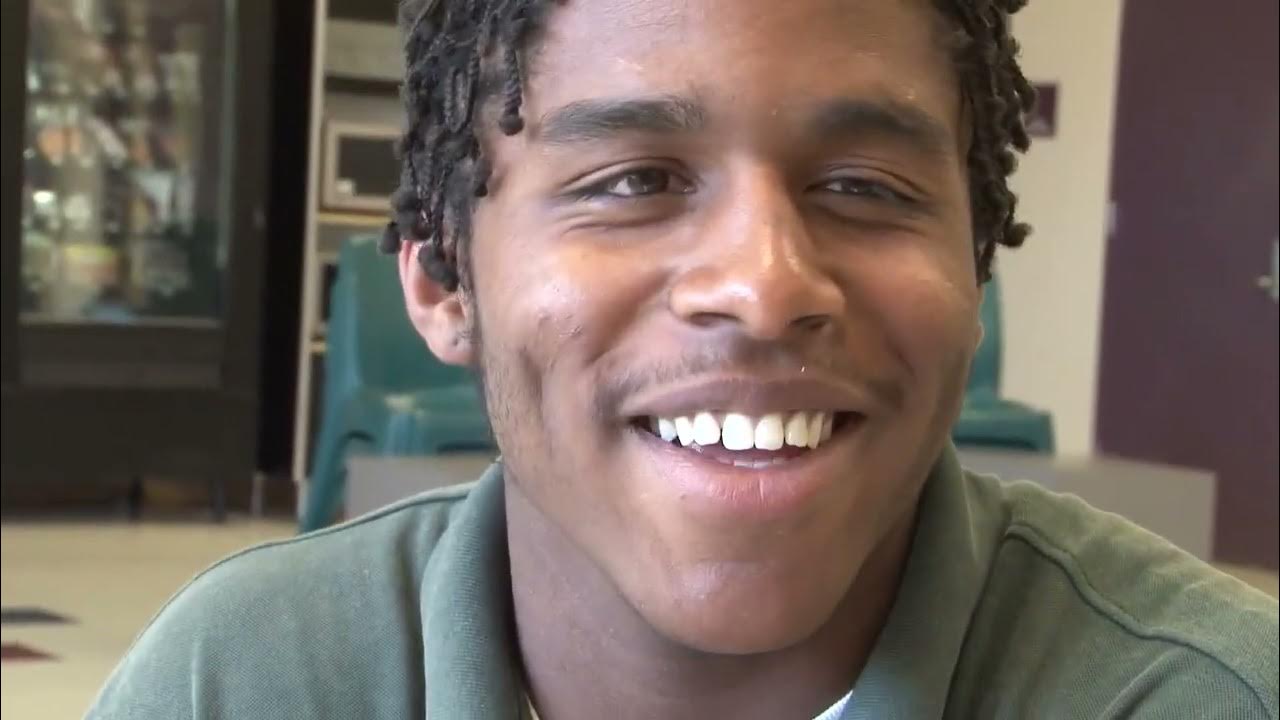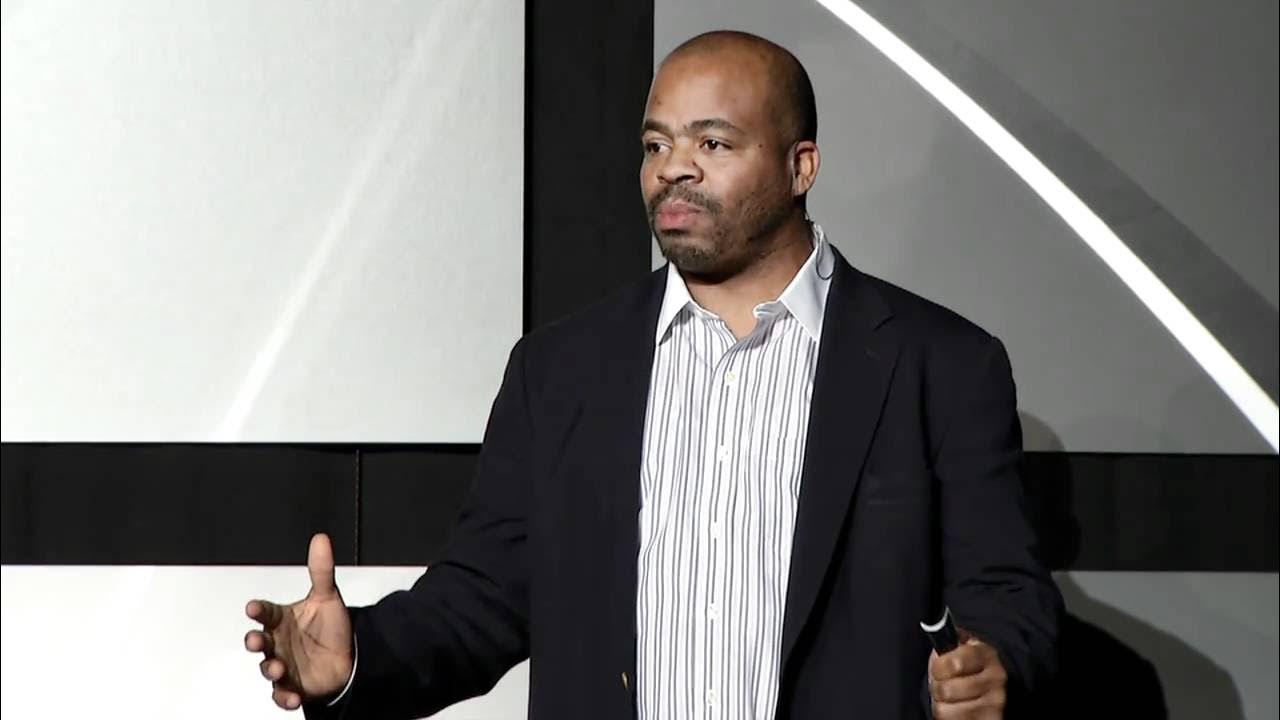Getting Ready To Be Released | Inside Maximum Security Part 4/4 | CNA Documentary
TLDRThe video script documents the raw experiences of a man named Grayson navigating life in prison and his efforts to reconnect with his family, particularly his daughter. It explores his emotional struggles, participation in rehabilitation programs, and the challenges of maintaining relationships from behind bars. The narrative also touches on his educational pursuits within the prison system and his aspirations for a crime-free life upon release, aiming to contribute positively to society and help at-risk youth avoid his mistakes.
Takeaways
- 📚 The script revolves around the experiences and challenges of a man named Grayson, who is in prison and trying to reconnect with his family, particularly his daughter.
- 👶 Grayson's eldest daughter was born in 2009, and he has limited contact with her due to his incarceration.
- 🕒 He is granted only 20 minutes for open visits with his newborn, which is a significant moment for him.
- 📞 Grayson is nervous about an upcoming call with his daughter, who is almost a teenager, and he seeks advice on how to communicate effectively with her.
- 🏡 His daughter has started to exhibit rebellious behavior, such as coming home late and locking herself in her room, which concerns Grayson.
- 🚴♀️ A metaphor of teaching a teenager to ride a bicycle is used to illustrate the importance of setting boundaries and gradually allowing independence.
- 📚 Grayson is involved in educational programs within the prison, including a pre-release program that prepares him for reintegration into society.
- 📖 He receives magazines and books from his family, which are screened for contraband, and these gifts are seen as a symbol of connection and support.
- 🏢 Grayson is also involved in work release programs, where he is released during the day to work and returns to the prison at night.
- 🏆 He is proud of his achievements in the prison school, such as passing his GCE O-Level exams, and hopes to pursue further education in logistics upon release.
- 🌳 Grayson expresses a strong desire to stay away from drugs and crime after his release, aiming to become a good citizen and contribute positively to society.
Q & A
What was the main reason the speaker borrowed the book 'How to Talk'?
-The speaker borrowed the book 'How to Talk' to learn how to communicate effectively with his children, as he had been away from them for a long time due to being in prison.
What is the significance of the 20-minute open visit for the speaker?
-The 20-minute open visit is significant for the speaker because it is a rare opportunity for him to physically hold his newborn child, which is a precious moment given the limited contact he has with his family while in prison.
How does the speaker describe his daughter's behavior when she tried to stay out late?
-The speaker describes his daughter as locking herself in her room and screaming when she tried to stay out late, expressing feelings of being uncared for and suggesting she should be allowed to go out if she is not wanted.
What advice does the speaker receive on how to communicate with his teenage daughter?
-The speaker is advised to communicate with his teenage daughter by setting boundaries, similar to how one would teach a child to ride a bicycle, ensuring she is safe but gradually allowing her independence.
What is the speaker's biggest fear about being released from prison?
-The speaker's biggest fear about being released is mingling with people and dealing with questions and situations that might be unpleasant, as he is not used to such interactions after being in prison.
What is the purpose of the pre-release program mentioned in the script?
-The pre-release program is designed to help inmates reintegrate into society by providing them with courses on reintegration preparation, financial literacy, and computer literacy.
How does the speaker feel about receiving a magazine from his family?
-The speaker feels happy and sees the magazine as a gift, appreciating it as something different from the usual daily routine in prison, and it serves as a reminder that he is not forgotten.
What is the role of peer supporters in the prison school?
-Peer supporters in the prison school help monitor any unusual behavior among inmates, update the officers, and provide support to fellow inmates, contributing to a safer and more supportive environment.
What is the speaker's plan for after his release from prison?
-The speaker plans to work in delivery, possibly using his bike, and hopes to pursue a diploma in logistics once he is released, aiming to contribute to the sector and help at-risk youth.
How does the speaker feel about his English exam result?
-The speaker feels nervous and unsure about his English exam result, hoping to at least get a passing grade and not an F9, as English is his weakest subject.
Outlines
😔 Struggling with Communication and Parenting from Prison
The script begins with a man named Grayson reflecting on his past drug use and his efforts to learn communication skills to reconnect with his children. He discusses the limited contact he had with his newborn daughter during his time in prison and the emotional challenge of a brief 20-minute visit. Grayson is anxious about an upcoming phone call with his almost-teenage daughter, who has started to exhibit rebellious behavior. He seeks advice on how to handle her growing independence and the emotional turmoil it brings.
📞 Emotional Phone Call and Preparing for Release
This paragraph captures the raw emotion of a phone call between Grayson and his daughter, where he tries to hide his nervousness and maintain a connection despite the barriers of prison. It also covers his participation in a pre-release program designed to prepare inmates for reintegration into society, including courses on financial literacy and computer skills. Grayson expresses his fears about reentering society and the importance of the program in helping him adjust to life after release.
🔍 Screening of Incoming Mail for Inmates
The script describes the process of screening magazines, books, and photographs sent to inmates to ensure there are no hidden messages or contraband. It highlights the importance of these items for inmates, such as a magazine received by one inmate, which serves as a reminder that he is not forgotten. The paragraph also touches on the role of peer supporters in monitoring the well-being of fellow inmates.
💭 Thoughts on Inmate Programs and Personal Growth
The narrative focuses on the experiences of an inmate as he navigates through various programs within the prison system. He discusses his concerns about the repetitive nature of movie nights and his desire to voice his opinions constructively. The inmate also shares his personal growth, including his efforts to exercise and read, and his aspirations to pursue further education upon release.
📝 Academic Struggles and the Pursuit of a Diploma
This paragraph details an inmate's academic journey within the prison, including his participation in a mathematics exam and his concerns about his performance in English. He discusses his plans to pursue a diploma in logistics upon release, recognizing the high demand in the field even during the COVID-19 pandemic, and his hope to contribute to society and help at-risk youth.
🏢 Transition to Work Release Scheme and Planning for the Future
The script follows an inmate as he transitions to a work release scheme, where he will work during the day and return to a release center at night. He discusses his past struggles with drugs and the loss of his mother, which led to his relapse. The inmate is determined to change his life, with plans to save money, rent a home, and start a family after his release.
🎓 Graduation and Aspirations for a Drug-Free Life
The narrative culminates in the inmate's graduation from his academic program within the prison. He expresses his nervousness about the results and his hope to do well. Upon receiving his certificate, he shares his plans to pursue a career in logistics and to help youth at risk, emphasizing the importance of making better choices in life.
🚪 The Anticipation and Reality of Release Day
The final paragraph describes the inmate's emotions and preparations for his release. He talks about the process of leaving the prison, including identity verification, returning personal items, and a final strip search. The inmate reflects on the meaning of freedom to him and his determination to obey the rules and regulations of society, with aspirations to study psychology and help others in the future.
🌅 Embracing Freedom and the Hope for a Better Future
The script concludes with the inmate's release and his immediate reflections on freedom. He expresses his desire to never return to prison and to make the most of his newfound freedom by being a good citizen and pursuing a meaningful career. The inmate is eager to reconnect with his family and start a new chapter in his life.
😢 The Pain of Leaving and the Resolve to Stay Free
In the final moments of the script, the inmate's family expresses their relief and hope that he will not return to prison. The inmate himself is determined to stay free, reflecting on the pain his incarceration has caused his loved ones and the importance of making amends and moving forward with his life.
Mindmap
Keywords
💡Communication
💡Incarceration
💡Teenage Behavior
💡Boundaries
💡Reintegration
💡Disciplinary Offenses
💡Work Release Scheme
💡Educational Programs
💡Drug Addiction
💡Release
💡Rehabilitation
Highlights
A parent seeks guidance on communicating with their children after a long absence due to imprisonment.
The importance of a 20-minute open visit for a prisoner's connection with their newborn child.
A father's anxiety about communicating with his teenage daughter and the challenges of maintaining a relationship from prison.
The emotional turmoil of a daughter expressing her feelings of neglect and a father's struggle to connect.
The analogy of teaching a child to ride a bicycle as a metaphor for setting boundaries and gradually allowing independence.
A prisoner's nervousness before a phone call with his daughter and the emotional weight of their limited communication.
The Singapore Prison Service's role in facilitating communication between inmates and their families.
The impact of a prisoner's release and the anticipation of reconnecting with family and society.
The process of preparing for release, including attending pre-release programs and learning financial and computer literacy.
The significance of receiving magazines and gifts in prison as a reminder of connection to the outside world.
The role of peer supporters in monitoring and assisting inmates, highlighting the community within the prison system.
The challenges of inmates in expressing their thoughts and concerns to officers, emphasizing the need for open communication.
The use of exercise as a coping mechanism and a way to manage time during incarceration.
The opportunity for inmates to pursue education and the impact of academic achievement on their self-esteem and future prospects.
The process of undergoing a suitability assessment for community-based programs and the anticipation of life outside prison.
The emotional experience of an inmate receiving his GCE 'O' Level results and the significance of academic success in prison.
The release day process and the mixed feelings of freedom, hope, and the fear of returning to prison.
The advice and support given to released inmates to help them reintegrate into society and avoid recidivism.
Transcripts
Browse More Related Video

Kids In Prison Then & Now - 13 Years Later, What Happened To These Boys? Akheem & Paul's Stories

How US Prison Gangs (Nuestra Familia) Actually Work | How Crime Works

Road To Redemption: Will These Ex-Convicts Fly Free? | Beyond Maximum Security | Part 3/3

TEDxStLouis - Andre Norman - How to Fix the American Prison System

The Long Road To Redemption-Jack

How London Street Gangs Actually Work | How Crime Works | Insider
5.0 / 5 (0 votes)
Thanks for rating: